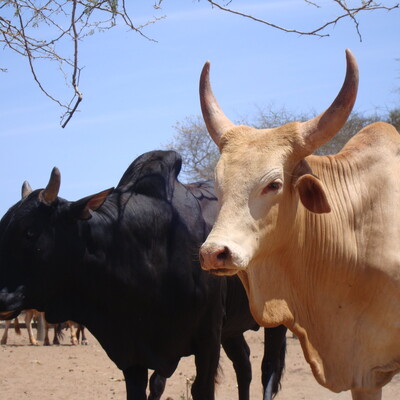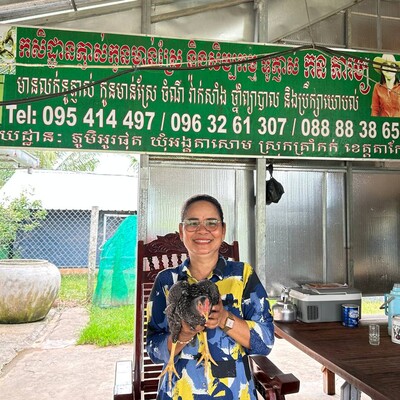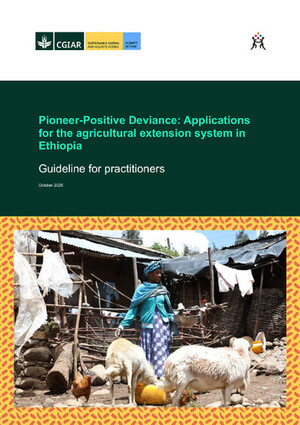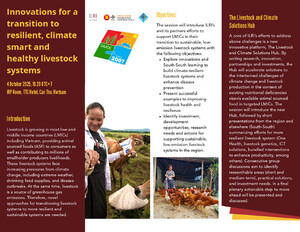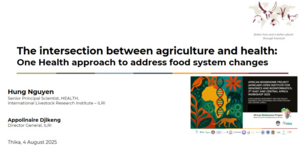
Hard numbers and soft stories: Reaching policymakers and empowering women in Africa’s agrifood value chains
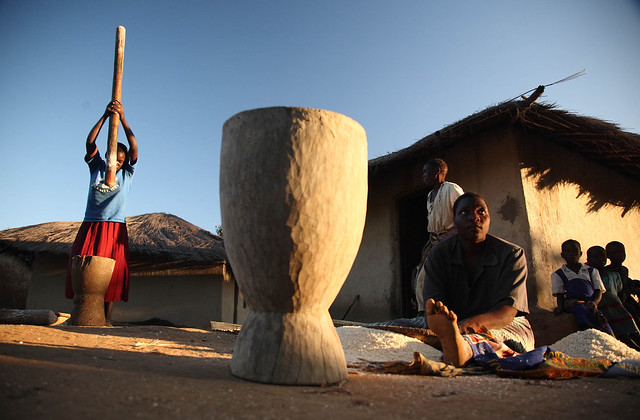
Women pounding grain for the evening meal in Khulungira Village, in central Malawi (photo credit: ILRI/Stevie Mann)
By Jo Cadilhon
The fifteen research centres collaborating in the global CGIAR partnership have all embraced gender as a cross-cutting theme for research. Understanding the differentiated social roles of men and women, and the challenges men and women face in accessing resources is key in reducing rural poverty, improving food security, nutrition and health, and sustainably managing natural resources. However, to achieve more gender-equitable goals, our development partners also need to be aware of how undertaking gender-sensitive actions could lead to a more equitable society. Policymakers are key partners in this process as they can orient government programs and donor projects towards more gender-equitable objectives. Yet, how can we make sure that policymakers become interested gender-equity and recognize its importance? Established in 2006 under the Comprehensive Africa Agriculture Development Programme (CAADP), the Regional Strategic Analysis and Knowledge Support System (ReSAKSS) supports efforts to promote evidence and outcome-based policy planning and implementation as part of the CAADP agenda. In East and Central Africa, the International Livestock Research Institute (ILRI) and the International Food Policy Research Institute (IFPRI) are implementing ReSAKSS activities. These include regular training workshops targeted on statisticians and economists in the statistics departments of African governments in order to help them better collect and analyse official statistical data and make robust interpretations from them to informing policymakers and other value chain stakeholders. In April 2014, I was invited by the ReSAKSS program in East and Central Africa to provide inputs into a training workshop on ‘Gender statistics for a more inclusive approach to agriculture and rural development’ for policymakers and members of agricultural statistics departments from the region. From the two-hour course, I expected to raise participants’ awareness of the importance of collecting gender-disaggregated data to plan relevant project interventions. I used a case study presenting data from the ImGoats project. The case study was a four-page document I had written with ILRI colleagues Birgit Boogaard, Elizabeth Waithanji and Jane Poole. It gave a summary of the objectives of the imGoats project in Mozambique: to diversify smallholders’ livelihood options by supporting goat products’ commercialization. The case study also mentioned the project beneficiaries’ geographical context and was followed by three pages of gender-disaggregated data tables on the livelihoods of the population in the project area. I split the participants into three groups and gave them forty minutes to analyse and discuss the data from the case study so as to respond to one of the following questions:
- Group 1: From the analysis of this data, what recommendations can you make to help set up development interventions that are more likely to address the issues faced by women in Inhassoro District of Mozambique?
- Group 2: Using the data displayed above, build a case for investing into rural development interventions that are more likely to lead to increased food security, greater school enrollment of children and better human health in Inhassoro District of Mozambique.
- Group 3: After reviewing the research methodology and its results, suggest improvements in the methods for data collection and analysis to reach even more robust gender-disaggregated evidence.
Each group then produced a five-minute presentation targeted to their Minister of Agriculture (indeed, senior policymakers have no time for long presentations). Working with statisticians and economists, I was expecting Group 3 to come up with recommendations on how to improve the reliability of the sampling, the robustness of the econometric model chosen to analyse the data, and on increasing the sample size for better representation of the overall population. However, I was pleasantly surprised to hear from them that one important item was lacking from the case study: the stories that would allow a content-rich and field context-relevant illustration of all the numbers presented. They reported that senior policymakers not only take decisions based on hard numbers and statistical data; but also want to know the stories behind the numbers. After working on the case study, the participants debriefed on the main lessons they learned:
- Collecting gender statistics needs to be well thought out in advance. Hoping a random sampling will lead to 50/50 men-women samples will not work;
- All data collected can be presented in a gender-disaggregated way;
- Tables of numbers are not enough to take decisions; decision-makers also need the stories related to the numbers;
- To present robust gender-disaggregated data, one needs to use specific gender-sensitive data collection and data analysis tools;
- One needs to gather gender-disaggregated data so as to understand better the needs of women before intervening.
This experience has confirmed my position that mixed methods research is likely to produce the most convincing results that help stakeholders and policymakers to take decisions to solve a problem. Especially when tackling issues with a strong gender component, economists should ally robust gender-disaggregated quantitative methods measuring the scope of a phenomenon to in-depth qualitative analyses of the situation experienced by different gender groups among farmers and other agrifood value chain actors. Jo Cadilhon is a senior agricultural economist with the Policy, Trade and Value Chains program at ILRI.







